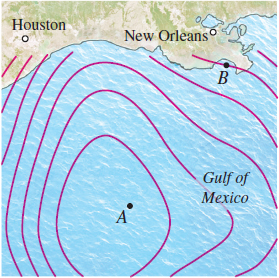16.3 Assess Your Understanding
Concepts and Vocabulary
Question
True or False The differential equation \(xy\,dx+\dfrac{ x^{2}}{2}dy=0\) is exact.
Question
True or False The differential equation \(y\cos x\,dx-\sin x\,dy=0\) is exact.
Question
True or False If \(\dfrac{\partial M}{\partial x}= \dfrac{\partial N}{\partial y},\) then \(M(x,y)\,dx+ N(x,y)\,dy=0\) is an exact differential equation.
Question
If the differential equation \(M(x,y)\,dx+N(x,y)\,dy=0\) is not exact, but \(a( x,y) M(x,y)\,dx+a( x,y) N(x,y)\,dy=0\) is an exact differential equation, then the expression \(a( x,y) \) is called a(n) _____ _____.
Skill Building
In Problems 5–22:
- Show that each equation is an exact differential equation.
- Find the general solution.
Question
\((4x-2y+5)\,dx+(2y-2x)\,dy=0\)
Question
\((3x^{2}+3xy^{2})\,dx+(3x^{2}y-3y^{2}+2y)\,dy=0\)
Question
\((a^{2}-2xy-y^{2})\,dx-(x+y)^{2}dy=0\), \(a\) is constant
Question
\((2ax+by+g)\,dx+(2e^{y}+bx+h)\,dy=0\), \(a\), \(b\), \(g\), \(h\) are constants
Question
\(\dfrac{1}{y}\,dx-\dfrac{x}{y^{2}}\,dy=0\)
Question
\(\dfrac{y\,dx-x\,dy}{x^{2}}=0\)
Question
\((x-1)^{-1}y\,dx+ [ \ln (2x-2)+y^{-1}]\,dy=0\)
Question
\(2xy^{-1}dy+(2\;\ln (5y)+x^{-1})\,dx=0\)
Question
\((x+3)^{-1}\cos y\,dx-[\sin y\ln (5x+15)-y-1]\,dy=0\)
Question
\(p^{2}\sec ( 2\theta ) \tan ( 2\theta )\,d\theta +p [ \sec ( 2\theta ) +2]\,dp=0\)
Question
\(\cos (x+y^{2})\,dx+2y\cos (x+y^{2})\,dy=0\)
Question
\([ \sin ( 2\theta ) -2p\cos ( 2\theta ) ]\,dp+ [ 2p\cos ( 2\theta ) +2p^{2}\sin ( 2\theta ) ]\,d\theta =0\)
Question
\(e^{2x}(dy+2y\,dx)=x^{2}dx\)
Question
\(e^{x^{2}}(dy+2xy\,dx)=3x^{2}dx\)
Question
\(\left[ \dfrac{1}{x+y}+y^{2}\right]\;dx+\left[ \dfrac{1}{x+y} +2xy\right]\;dy=0\)
Question
\(\dfrac{y^{2}-2x^{2}}{xy^{2}-x^{3}}\,dx+ \dfrac{2y^{2}-x^{2}}{y^{3}-x^{2}y}\,dy=0\)
Question
\(2y^{3}\sin ( 2x)\,dx-3y^{2}\cos ( 2x)\,dy=0\)
Question
\(\dfrac{3y^{2}}{x^{2}+3x}\,dx+\left( 2y\ln \dfrac{5x}{x+3}+3\sin y\right)\;dy=0\)
In Problems 23–26, each differential equation is exact. Find the particular solution that satisfies the given boundary condition.
Question
\((1+y^{2}+xy^{2})\,dx+(x^{2}y+y+2xy)\,dy=0\); \(y(1)=1\)
Question
\((3x^{2}y^{-1}+2x)\,dx+(y^{2}-x^{3}y^{-2})\,dy=0\); \(y(3)=3\)
Question
\((2xy-\sin x)\,dx=(2y-x^{2})\,dy\); \(y(0)=1\)
Question
\(y[y+\sin x]\,dx-\left[ \cos x-2xy+\dfrac{1}{1+y^{2}}\right]\;dy=0\); \(y(0)=1\)
1077
Applications and Extensions
Question
Integrating Factors Suppose the equation \(M(x,y)\,dx+N(x,y)\,dy=0\) has the property that \(\dfrac{\dfrac{\partial N}{\partial x}-\dfrac{\partial M}{\partial y}}{M }\) is a function of \(y\) only. If \[\begin{equation*} u(y)=e^{\Big[ \int \frac{\frac{\partial N}{\partial x}-\frac{\partial M}{ \partial y}}{M}\,dy\Big] }=\exp \left[ \int \frac{\dfrac{\partial N}{ \partial x}-\dfrac{\partial M}{\partial y}}{M}\,dy\right] \end{equation*}\]
show that \(u(y)\left[ M(x,y)\,dx+N(x,y)\,dy\right] =0\) is an exact differential equation.
Question
Integrating Factors Suppose the equation \(M(x,y)\,dx+N(x,y)\,dy=0\) has the property that \(\dfrac{\dfrac{\partial M}{\partial y}-\dfrac{\partial N}{\partial x}}{N }\) is a function of \(x\) only. If \[\begin{equation*} u(x)=e^{\Big[ \int \frac{\frac{\partial M}{\partial y}-\frac{\partial N}{ \partial x}}{N}\,dx\Big] }=\exp \left[ \int \frac{\dfrac{\partial M}{\partial y}-\dfrac{\partial N}{ \partial x}}{N}\,dx\right] \end{equation*}\]
show that \(u(x)[M(x,y)\,dx+N(x,y)\,dy]=0\) is an exact differential equation.
In Problems 29–33,
- Change each equation to an exact differential equation by using one of the integrating factors discussed in Problems 27 and 28.
- Solve the resulting differential equation.
- Verify that the solution also satisfies the original equation.
Question
\(( 4x^{2}+y^{2}+1)\,dx+(x^{2}-2xy)\,dy=0\)
Question
\(4x^{2}y\,dx+(x^{3}+y)\,dy=0\)
Question
\(y\,dx+(x^{2}y-x)\,dy=0\)
Question
\((\cos y+x)\,dx+x\sin ydy=0\)
Question
\((x^{2}-x\sin y)\,dx+x^{2}\cos y\,dy=0\)
Challenge Problem
Question
Measuring the Effect of Pollution A crash in the Gulf of Mexico resulted in an oil spill at the point \(A\) shown in the figure below. Several months after the spill, measurements are taken to determine whether the oil is still affecting the marine environment of the Gulf. The contour curves shown in the figure are curves of constant oil concentration. These curves are modeled by the differential equation \[\begin{equation*} \dfrac{2\dfrac{\beta -y}{100}-2\cos \dfrac{\beta -y}{100}}{2\dfrac{\alpha -x }{100}+4\cos \dfrac{\alpha -x}{100}^{{}}}y^{\prime} ( x) =1 \end{equation*}\]
where \(\alpha\) and \(\beta\) are specified constants.

- Find the solution of the differential equation.
- The solution from (b) can be interpreted as the oil concentration in pounds of oil per million gallons at a point \(( x,y)\). Suppose the point \(A\) is at the origin and the point \(B\) is \((162.14,250.64)\). Use the initial condition \(f(0,0) =1247.2\) to find the oil concentration at \(B,\) given \(\alpha =93.43\) and \(\beta =59.12.\)
